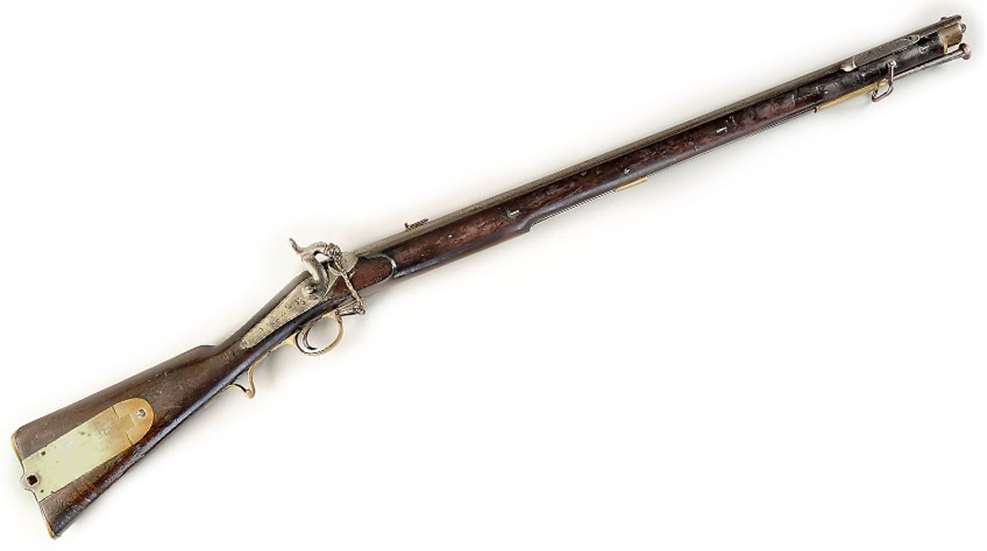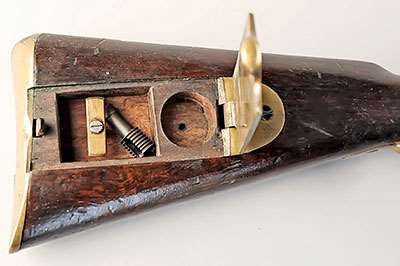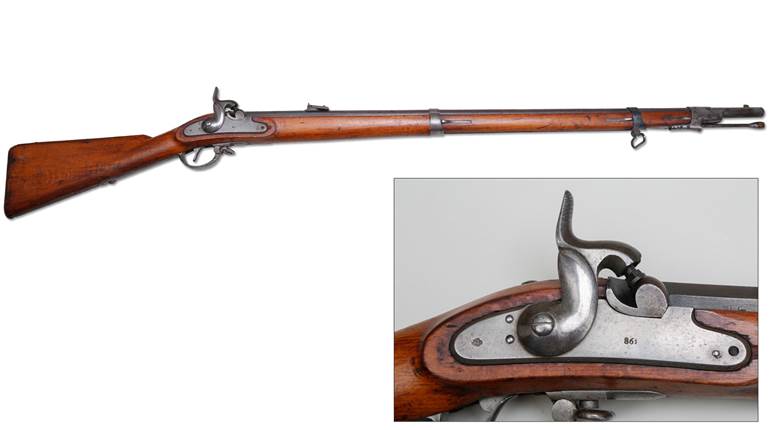

Following its experiences facing Yankee riflemen during the American War of Independence, the British military, though having experimented with rifles previously, decided it was finally time to get serious. Consequently, King George III officially established rifle units at the end of the 19th century, arming them with a fine Germanic-looking flintlock rifle, the famed Baker.
The Baker became a star performer during the Napoleonic Wars, popular with both Crown troops and Britain’s allies, and it remained principal issue for a couple of decades following the Treaty of Paris (1814). As good as it was though, authorities realized by the 1830s that the Baker was getting a bit long in the tooth. They decided to establish a program to replace the old warhorse with an improved, more modern, percussion arm.
After extensive testing, what finally emerged, though looking much like its short, brass-mounted, jaeger-style predecessor—cosmetics aside—was a considerably different animal.
The new rifle, dubbed “Brunswick” after a similar arm used by the Duke of Brunswick’s troops in Germany, was built around an unusual rifling system featuring two, deep, rounded grooves pitched at one turn in the 3½-ft.-long, twist-steel barrel. The bullet was round, cast with a belt around its circumference and tied up in a lubricated calico patch. As this particular arrangement was not conducive to being used in the normal all-in-one paper cartridge issued to line troops, bullets and paper-wrapped powder charges were issued separately.
Loading the rifle was simple. The rifleman simply bit off the rear of the powder’s wrapper and poured the charge down the barrel, followed by the bullet, its belt fitting mechanically into the rifling grooves. To enable a soldier to properly align the belt with the rifling, notches were cut at the muzzle and the position of the belt was marked out in black on the calico. Despite some harping to the contrary by some older officers who decried the loss of their beloved flintlock, the Brunswick loaded more easily and fouled less than the Baker, allowing more shots between cleanings. Experience showed the Brunswick could be loaded and fired 10 times in 7½ minutes.
The rifle used percussion caps for ignition and possessed a back-action-style lock. Furniture, to include a generous butt box with a hinged lid intended to store implements with which to service the rifle, was of brass. The stock was full-length English walnut. In keeping with tradition, riflemen were also given a sword-style bayonet with a 22" leaf-shaped blade that snapped onto a long bar on the right side of the barrel near the muzzle.
The Brunswick’s rear sight had a fixed notch marked to 50 yards and a single flip-up leaf with graduations to 300 yards. In 1841, a Second Model Brunswick was authorized incorporating several modifications—the most noticeable of which was the replacement of the back-action lock for a more robust side-action style. Still, the two versions continued to be used side-by-side for a period of time.
Larger-caliber “heavy” Brunswicks were also made in small numbers for the Royal Navy, and sporting versions were popular with hunters for years. As well, the arm was copied by others, the most notable being those produced in both rifled and smoothbore versions in Nepal, and a Russian variant that fired a pointed, double-flanged projectile. Brunswicks were replaced in Britain by the Minié Rifle in 1851, and numbers were sold out of stores, some finding their way to the Confederacy during the Civil War.
The rifle shown here is a nice First Model Brunswick in complete, unaltered condition. These rifles, while not common, do turn up from time-to-time and are popular with collectors. One in this shape is worth a solid $4,250.
Gun: First Model Brunswick Rifle
Manufacturer: Royal Manufactory, Enfield
Caliber: .704
Manufactured: c. 1839
Condition: NRA Very Good (Antique Gun Standards)
Value: $4,250



































